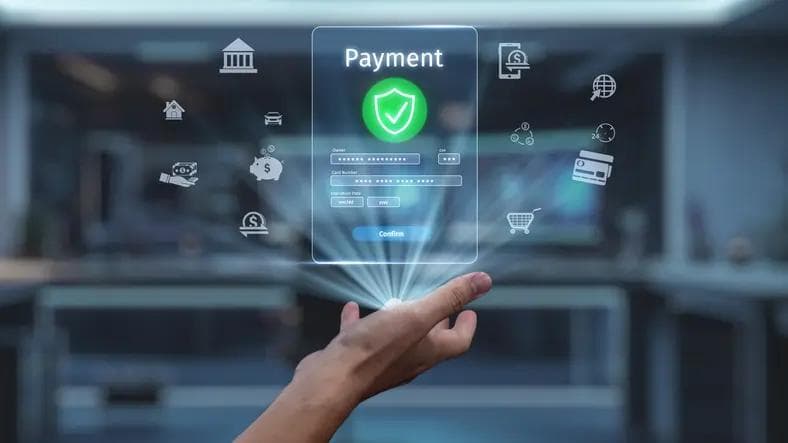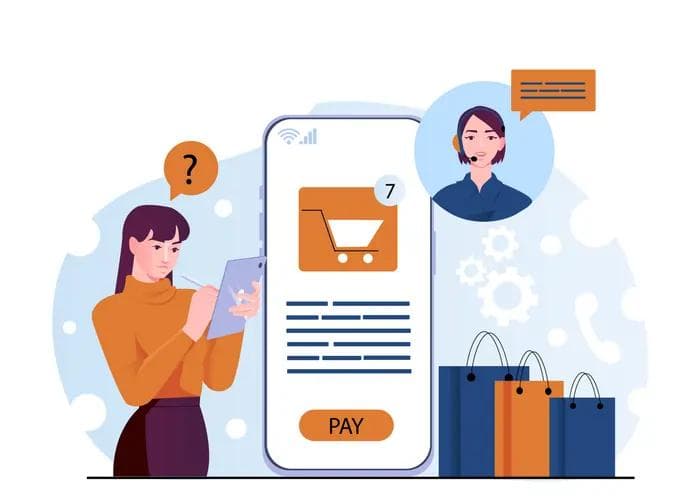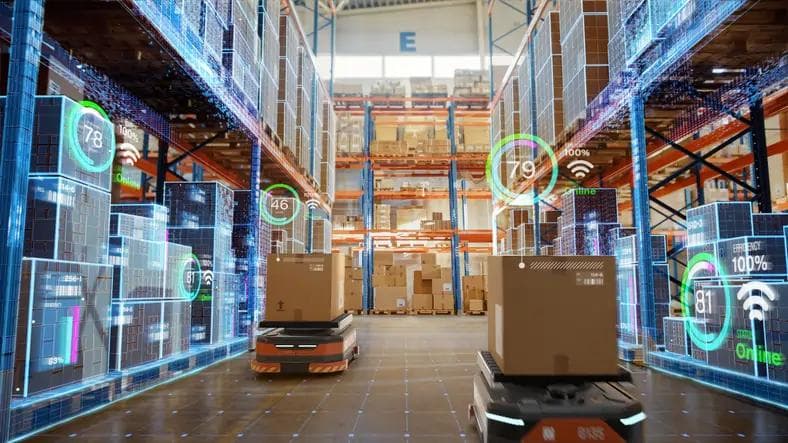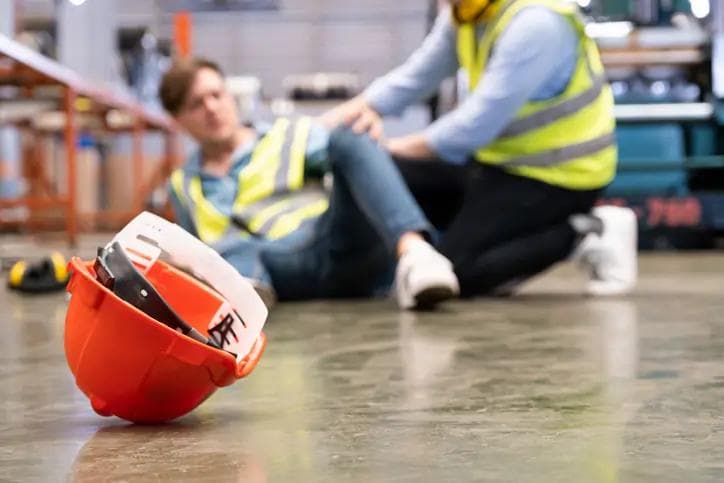3 future-ready retail trends that were enabled by post-COVID shopping behavior
3 future-ready retail trends that were enabled by post-COVID shopping behavior
Published by Jessica Weisman-Pitts
Posted on December 21, 2021

Published by Jessica Weisman-Pitts
Posted on December 21, 2021

By Kunal Puri, Global Head – Customer Success, Infosys Equinox
Following the UK’s much anticipated lifting of coronavirus restrictions in July, and with back-to-school and holiday seasons now in full swing, high street retailers anticipate an uptick in sales and footfalls.
However, over 18 months of pandemic precautions have entrenched consumers’ “hybrid” shopping behavior, giving more reason to use digital channels to purchase online, use click-and-collect curbside pickup services, and preshop to minimize time spent in store.
Future-forward retailers are embracing technology trends to support this behavior and keep staff and shoppers safe. The good news is that these investments are set to outlast the pandemic, enhancing in-store shopping and supporting cross-channel buying journeys well into the future.
The rise of experiential retail – which involves bringing digital technology into physical stores – is a customer-driven trend. 65% of UK shoppers (and over 80% of Millennials and Gen Z) say they would change their shopping behavior if high street stores were more experiential.
The growing roster of retailers embracing experiential retail include consumer favorites like Nike, John Lewis, Lululemon and Levi’s, with AR/VR (augmented reality and virtual reality), interactive screens, and mobile gamification topping the list of “phygital” investments.
Endless aisle
In-store digital supports two consumer behaviors that were already strong before the pandemic: showrooming (previewing products in store to purchase online) and ROPO (research online, purchase offline).
“Endless aisle” connects in-store shoppers with a retailer’s full product assortment across store and online inventory in real-time. Post-pandemic, retailers can integrate endless aisle capabilities with digital screens to ensure showrooming purchases are not placed with another shop, and customers can take advantage of the same assortment, promotions and loyalty rewards as the e-commerce channel.
Integrating digital installations with e-commerce systems ensures shoppers can connect to their digital profiles, receive personalized product recommendations and promotions, and access wishlists and browsing history from their digital “pre-shopping” lists to locate products in-store.
Despite the summer’s bump in retail sales, supply chains are still suffering as a result of COVID-related interruptions. A CBI survey found UK retailers’ stock levels in relation to expected sales reached a record low in July 2021, with stock levels expected to fall an additional 27% in August. More than ever, endless aisle capabilities are essential to save stockout sales and help customers find in-stock items to ship to their homes through their mobile phones, digital kiosks, or store associates’ tablets.
Magic mirrors
While relaxed COVID restrictions are bringing more traffic to physical stores, many shoppers and staffers are maintaining social distancing protocols and efforts to reduce human contact.
For example, interactive changing rooms that leverage body scanning enable shoppers to minimize contact with store staff. Connected to all in-store inventory, mirrors can suggest similar styles and complementary items that shoppers can try on virtually before requesting from staff with the push of a button, and without having to leave the changing room.
Likewise, out-of-stock sizes and styles can be located through endless aisle capabilities and be added to an online wishlist or digital cart, right from the mirror. Additionally, AI-driven personalization engines can self-learn which products are most successfully sold and cross-sold through smart mirrors down to the individual store level, while simultaneously leveraging data from the digital channel, segmented by city or zip code.
Magic mobile
Virtual try-on can also be embedded into mobile apps that customers can use in-store or wherever they are. For example, Levi’s “Virtual Stylist” personal shopping assistant lets customers access AI-driven fashion advice 24/7 through levi.com and Facebook Messenger. Combining Levi’s True Fit technology (which compares how a specific style of Levi’s compares to other popular brands’ styles and fit) with an intelligent chatbot that asks the right probing questions replicates the experience of speaking with a helpful human, while leveraging the power of rich data.
Augmented reality in retail is not just limited to apparel. AR and VR enhances the buying experience for home decor and furnishings, home improvement projects, beauty, sporting goods and more. For example, IKEA, Home Depot, Lowe’s, Target, Wayfair and Anthropologie are just a handful of brands that let shoppers preview furnishings in their own homes using their mobile cameras and AR.
Liveshopping is a trend that’s rapidly picking up across Europe and the US. Wildly popular in Asia, where livestream shopping events generate over $60 billion in sales per year, livestreaming is already gaining traction amongst top brands and retailers through Amazon, Facebook and Instagram in the US and EU.
Outside of third-party streaming platforms, high street retailers can bring video co-shopping to their physical stores and mobile experiences in multiple ways. During2020’s back-to-school season, Levi’s hosted live virtual styling events for small groups of friends to shop together from home. While 2021’s back-to-school season offers a return to in-store shopping, video apps enable in-store customers to shop with friends remotely, and ROPO shoppers to video chat with in-store staff and stylists during their “pre-shopping” journeys.
Combined with virtual closets, virtual try-on and augmented reality, video shopping is an innovation that’s expected to last beyond the pandemic, appealing to Gen Z’s digital native shoppers.
Scan-and-go self-checkout is in strong demand, with 63% of retailers planning to offer the feature by 2022. Mobile self-checkout enables in-store shoppers to scan barcodes and QR codes to build a digital cart, pay with their credit cards or mobile wallet and skip checkout queues entirely.
Pre-COVID, 73% of shoppers were interested in self-checkout and 40% of consumers reported they were more likely to shop with stores offering mobile self-checkout, with the top reason being the ability to skip the checkout queue. With social distancing requiring 6 feet between patrons (even for self-checkout kiosk queues), mobile self-checkout has even more appeal in 2021.
When fully integrated with the digital channel, retailers can offer even more benefits to shoppers. Buyers can build a unified cart that leverages endless aisle inventory and previously saved cart contents to ship out-of-stock and ‘online only’ items to their homes, while collecting their in-store items through a single transaction. In turn, merchants can offer blended promotions and loyalty rewards to encourage customers to build larger carts during their in-store visit. They can also better attribute revenue across the omnichannel journey.
“Unifying physical stores with e-commerce is critical for succeeding in the new age of retail,” says Amit Kalley, CEO at Infosys Equinox, a human-centric digital commerce and marketing platform. “Early adopters of in-store digital built stand-alone experiences that were siloed from e-commerce. Without endless aisle capabilities, omnichannel personalization and mobile convenience, digital screens do little to enhance customer experience or support cross-channel shopping habits.”
To bring the capabilities of e-commerce into physical stores, retailers must turn to a new breed of digital commerce platforms that leverage headless microservices. Microservices compartmentalize capabilities such as catalog, search, pricing, promotions, inventory, accounts, orders and checkout into independent application programming interfaces (APIs) that can connect to any device or digital experience.
For example, a smart mirror can pull the content and data it needs from the commerce platform. ‘Buy’ buttons can be embedded into livestreams and social apps, and a surge in digital transactions during a live event won’t slow down page load or checkout times for other online and mobile shoppers. A dedicated scan-and-go experience can be enabled within a progressive web application without the need to build a separate native app for frictionless self-checkout. And all shopper’s data and history can be added to their single account profile.
Fortunately, retailers who want to adopt future-ready experiences fast need not abandon their legacy systems entirely. Microservices can be added around existing commerce platforms to support the functionality needed for a given experience or touchpoint and phygital capabilities can be developed significantly faster than was previously possible, at far less cost, and can support seamless customer journeys across digital and physical channels.
By Kunal Puri, Global Head – Customer Success, Infosys Equinox
Following the UK’s much anticipated lifting of coronavirus restrictions in July, and with back-to-school and holiday seasons now in full swing, high street retailers anticipate an uptick in sales and footfalls.
However, over 18 months of pandemic precautions have entrenched consumers’ “hybrid” shopping behavior, giving more reason to use digital channels to purchase online, use click-and-collect curbside pickup services, and preshop to minimize time spent in store.
Future-forward retailers are embracing technology trends to support this behavior and keep staff and shoppers safe. The good news is that these investments are set to outlast the pandemic, enhancing in-store shopping and supporting cross-channel buying journeys well into the future.
The rise of experiential retail – which involves bringing digital technology into physical stores – is a customer-driven trend. 65% of UK shoppers (and over 80% of Millennials and Gen Z) say they would change their shopping behavior if high street stores were more experiential.
The growing roster of retailers embracing experiential retail include consumer favorites like Nike, John Lewis, Lululemon and Levi’s, with AR/VR (augmented reality and virtual reality), interactive screens, and mobile gamification topping the list of “phygital” investments.
Endless aisle
In-store digital supports two consumer behaviors that were already strong before the pandemic: showrooming (previewing products in store to purchase online) and ROPO (research online, purchase offline).
“Endless aisle” connects in-store shoppers with a retailer’s full product assortment across store and online inventory in real-time. Post-pandemic, retailers can integrate endless aisle capabilities with digital screens to ensure showrooming purchases are not placed with another shop, and customers can take advantage of the same assortment, promotions and loyalty rewards as the e-commerce channel.
Integrating digital installations with e-commerce systems ensures shoppers can connect to their digital profiles, receive personalized product recommendations and promotions, and access wishlists and browsing history from their digital “pre-shopping” lists to locate products in-store.
Despite the summer’s bump in retail sales, supply chains are still suffering as a result of COVID-related interruptions. A CBI survey found UK retailers’ stock levels in relation to expected sales reached a record low in July 2021, with stock levels expected to fall an additional 27% in August. More than ever, endless aisle capabilities are essential to save stockout sales and help customers find in-stock items to ship to their homes through their mobile phones, digital kiosks, or store associates’ tablets.
Magic mirrors
While relaxed COVID restrictions are bringing more traffic to physical stores, many shoppers and staffers are maintaining social distancing protocols and efforts to reduce human contact.
For example, interactive changing rooms that leverage body scanning enable shoppers to minimize contact with store staff. Connected to all in-store inventory, mirrors can suggest similar styles and complementary items that shoppers can try on virtually before requesting from staff with the push of a button, and without having to leave the changing room.
Likewise, out-of-stock sizes and styles can be located through endless aisle capabilities and be added to an online wishlist or digital cart, right from the mirror. Additionally, AI-driven personalization engines can self-learn which products are most successfully sold and cross-sold through smart mirrors down to the individual store level, while simultaneously leveraging data from the digital channel, segmented by city or zip code.
Magic mobile
Virtual try-on can also be embedded into mobile apps that customers can use in-store or wherever they are. For example, Levi’s “Virtual Stylist” personal shopping assistant lets customers access AI-driven fashion advice 24/7 through levi.com and Facebook Messenger. Combining Levi’s True Fit technology (which compares how a specific style of Levi’s compares to other popular brands’ styles and fit) with an intelligent chatbot that asks the right probing questions replicates the experience of speaking with a helpful human, while leveraging the power of rich data.
Augmented reality in retail is not just limited to apparel. AR and VR enhances the buying experience for home decor and furnishings, home improvement projects, beauty, sporting goods and more. For example, IKEA, Home Depot, Lowe’s, Target, Wayfair and Anthropologie are just a handful of brands that let shoppers preview furnishings in their own homes using their mobile cameras and AR.
Liveshopping is a trend that’s rapidly picking up across Europe and the US. Wildly popular in Asia, where livestream shopping events generate over $60 billion in sales per year, livestreaming is already gaining traction amongst top brands and retailers through Amazon, Facebook and Instagram in the US and EU.
Outside of third-party streaming platforms, high street retailers can bring video co-shopping to their physical stores and mobile experiences in multiple ways. During2020’s back-to-school season, Levi’s hosted live virtual styling events for small groups of friends to shop together from home. While 2021’s back-to-school season offers a return to in-store shopping, video apps enable in-store customers to shop with friends remotely, and ROPO shoppers to video chat with in-store staff and stylists during their “pre-shopping” journeys.
Combined with virtual closets, virtual try-on and augmented reality, video shopping is an innovation that’s expected to last beyond the pandemic, appealing to Gen Z’s digital native shoppers.
Scan-and-go self-checkout is in strong demand, with 63% of retailers planning to offer the feature by 2022. Mobile self-checkout enables in-store shoppers to scan barcodes and QR codes to build a digital cart, pay with their credit cards or mobile wallet and skip checkout queues entirely.
Pre-COVID, 73% of shoppers were interested in self-checkout and 40% of consumers reported they were more likely to shop with stores offering mobile self-checkout, with the top reason being the ability to skip the checkout queue. With social distancing requiring 6 feet between patrons (even for self-checkout kiosk queues), mobile self-checkout has even more appeal in 2021.
When fully integrated with the digital channel, retailers can offer even more benefits to shoppers. Buyers can build a unified cart that leverages endless aisle inventory and previously saved cart contents to ship out-of-stock and ‘online only’ items to their homes, while collecting their in-store items through a single transaction. In turn, merchants can offer blended promotions and loyalty rewards to encourage customers to build larger carts during their in-store visit. They can also better attribute revenue across the omnichannel journey.
“Unifying physical stores with e-commerce is critical for succeeding in the new age of retail,” says Amit Kalley, CEO at Infosys Equinox, a human-centric digital commerce and marketing platform. “Early adopters of in-store digital built stand-alone experiences that were siloed from e-commerce. Without endless aisle capabilities, omnichannel personalization and mobile convenience, digital screens do little to enhance customer experience or support cross-channel shopping habits.”
To bring the capabilities of e-commerce into physical stores, retailers must turn to a new breed of digital commerce platforms that leverage headless microservices. Microservices compartmentalize capabilities such as catalog, search, pricing, promotions, inventory, accounts, orders and checkout into independent application programming interfaces (APIs) that can connect to any device or digital experience.
For example, a smart mirror can pull the content and data it needs from the commerce platform. ‘Buy’ buttons can be embedded into livestreams and social apps, and a surge in digital transactions during a live event won’t slow down page load or checkout times for other online and mobile shoppers. A dedicated scan-and-go experience can be enabled within a progressive web application without the need to build a separate native app for frictionless self-checkout. And all shopper’s data and history can be added to their single account profile.
Fortunately, retailers who want to adopt future-ready experiences fast need not abandon their legacy systems entirely. Microservices can be added around existing commerce platforms to support the functionality needed for a given experience or touchpoint and phygital capabilities can be developed significantly faster than was previously possible, at far less cost, and can support seamless customer journeys across digital and physical channels.
Explore more articles in the Business category











